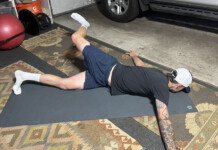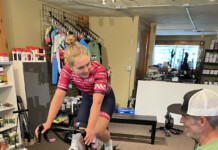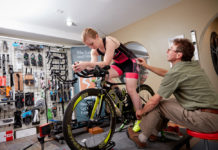A bike fitter is a therapist whose role it is to facilitate agreement between your body and your bike so that you want to hang out and play together happily. If one partner is complaining (usually your body), then is the issue with the other partner (your bike) or could it be that your body is contributing to the disharmony? And who gets the therapist’s attention – your bike, your body, or both?
Often the focus is on adjusting the bike to suit the body. This is based on the guiding principle that it is easier and better to adjust the bike to the body, than to ask the body to adapt to the bike. This may result in what is called an “accommodated fit” in that the bike is changed to accommodate the body. For people carrying the result of some significant injury or surgery history, especially to the spine, then an accommodated fit is usually required in order minimize pain and maximize comfort. The focus is on changing the bike to support the body “as is”.
However an accommodated fit position may not be an optimal position from the perspective of sustainable power output, aerodynamics, handling, metabolic efficiency, or long term protection of joint surfaces from wear and tear. Now those things may not be relevant or important to your riding experience, but if they are then you are probably more interested in achieving an “optimal fit”. But an optimal fit needs an optimal body, and not one that has muscular tightness or imbalances and restricted or asymmetrical movement patterns. Now if you don’t have an optimal body, and who does, then how do you get set up in an optimal fit position?
You need to consider another therapist – a body therapist. Because to achieve an optimal fit, your body needs to get worked on, so that you have the range of motion and movement patterns available to be comfortable and functional in an efficient way that doesn’t wear you out through long term repetitive cycling motions.
Body therapy could be approached in a DIY manner through learning and practicing stretching and myofascial release techniques; by going to yoga or pilates classes; or getting a personalized assessment and treatment plan from a physical therapist or movement specialist. You need to seek out practitioners who take a whole of body perspective and are experienced with active sports participants, not therapists who focus on localized post-op or injury rehab.
As your body’s functionality improves, then your fit position can be changed and progress from accommodated toward optimal. This is obviously a longer, more involved and costly process than simply getting a “bike fit” but is recommended if you are aiming to be your best.
If optimal is not for you, then you can be accommodated!
John Higgins offers bike fitting services at BikeFitr in Salt Lake City, and can suggest several body therapists. Contact john@bikefitr.com








